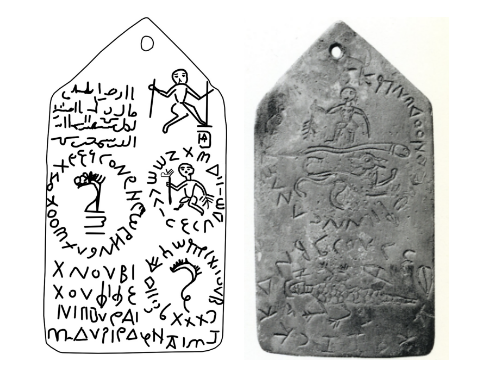The Workshop on Late Antiquity and Byzantium is pleased to announce our first meeting of Winter Quarter 2017:
A Copper Plaque in the Louvre:
the Transformation of Greek Amulets in Late-Antique Egypt
Christopher A. Faraone
Professor of Classics, Frank and Gertrude Springer Professor in the Humanities and the College
A copper plaque purchased in Egypt, probably near Luxor, was donated in the 1840s to the Bibliothèque Nationale in Paris and eventually made its way into the Egyptian collection of the Louvre. This paper will argue that this unique piece is a “pattern-book” originally designed to be hung on the wall of a studio in order to remind an artisan how to make amulets for eye-disease, stomachache and other problems by carving or drawing the six designs and the texts that accompany them. Its designs date back to the Roman period and were altered at some point probably by a Christian or an artisan with Christian clientele, who suppressed and Christianized some of the more troubling pagan details (e.g. animal-headed gods). The version in the Louvre is even later: the Arabic inscription in the top left corner of the obverse tells us that the date of its manufacture was probably in the 8th or 9th century CE.
Tuesday, January 17 — 4:30 pm in CWAC 156
We look forward to seeing you there!

